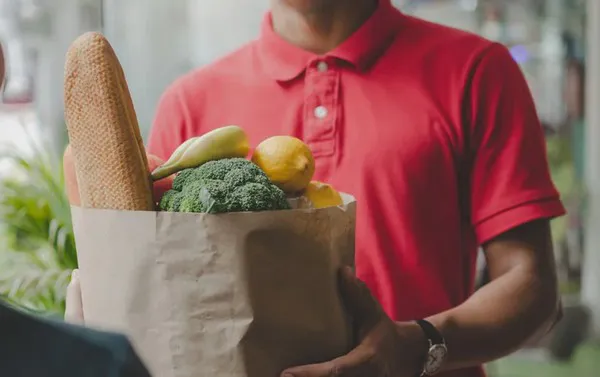Delivering groceries to the consumer’s front door is an opportunity for retailers, despite the challenges.
One of the transformative effects of the global pandemic is the change in retail buying behavior. People, young and old, have truly accepted online shopping, and groceries have been added to the list of direct-to-consumer orders.
In April 2020 groceries bought online more than doubled in Italy. In the UK, Tesco’s online grocery business went up from 9 to 16 percent of total country sales in the first quarter of 2020. Online supermarket Ocado Retail reported in a tenfold increase in demand and a hundredfold increase in web traffic in April 2020 compared to pre-pandemic levels. Retired households in the UK have increased how much they spend on groceries online by 229% between Jan 2020 and Jan 2021. They now account for approximately 28% of the 6.4 million consumers who buy groceries online.
I think it’s safe to say these numbers could have been even higher, considering demand has exceeded supply since the start of the pandemic.
What this surge means for retailers
With older demographics increasingly adopting digital buying behaviors, it looks like door-deliveries are here to stay. Last mile logistics for groceries, however, is a complex and costly business model.
To fulfil these expectations at scale, retailers will need to pivot some of their strategies to provide excellent customer experiences while keeping logistics processes as efficient as possible.
In the rest of this article I talk about some of the key challenges retailers are experiencing in the face of change, and some interesting developments to overcome these challenges.
Order size and m3
What differentiates an average grocery order from a typical retail order (clothes, books, etc.) is that the monetary value per cubic meter typical is much lower for groceries than for other consumer goods. Take for example, rolls of toilet paper – on high demand during the first few weeks of the pandemic! They require much more space than a book or t-shirt but are valued at a fraction of the cost. It comes as no surprise that in the traditional supermarket model, retailers were happy to have the consumer carry out the last mile delivery to their homes themselves.
New developments
Several retailers have begun to use a temperature-controlled delivery box that can store goods for up to 24 hours in a refrigerated or even frozen state using cooling elements or ice packs. These boxes have made it easier for delivery personnel to handle and stack groceries into the delivery truck or van. On the other hand, oddly shaped products are difficult to fit in the box. And if the order is small, the retailer ends up bearing the hidden cost of transporting air.
For more information: maersk.com

